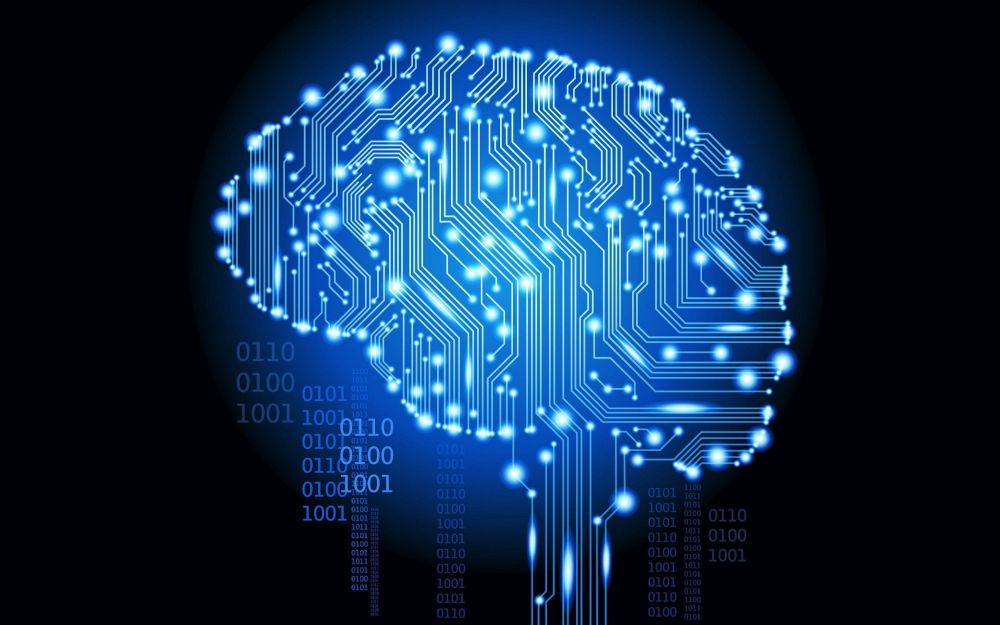

Freelance Life Sciences journalist supporting technological and scientific solutions through content creation and international expansion.
In a not too distant future your brain will be integrated in the internet, and your thoughts will be inputs, having a direct and immediate physical impact in your surroundings. Brain computer interfaces (BCI) will translate what you are thinking to do at that moment: moving a cursor on the screen or a bionic limb, interacting with a machine at the fabric, your toaster at home or whatever goes through your imagination.
In essence, a BCI decodes neural activity and translates it into an external command. This technology forms a pathway from the brain’s electrical activity to a device, and can be used in a plethora of applications. For example, in paralysed people, the brain information can not be transmitted into the muscles, so BCIs can improve their lives significantly.
We are witnessing the birth of this market, although we are still a few years away from mass adoption and changes our societies forever. Currently, BCI devices are capable of decoding general brain activity, such as stress or concentration, and simple commands through electrodes touching the scalp. Many different ideas are being investigated, mainly in healthcare. R&D has focused primarily on neuroprosthetics applications, with the goal of repairing damaged human cognitive or sensory-motor function. Also we are seeing advances in military research with DARPA, or the gaming industry with the US company Valve. Even Elon Musk is pushing this technology and facilitating the path to others. But there is much more brewing in the labs and startups around the world.
Synchron uses blood vessels to implant a sensor with a minimally invasive procedure. The company aims to give patients with paralysis the ability to control digital devices with their thoughts. The Stentrode, its endovascular neural interface, allows users to complete tasks on external devices, including texting, emailing, online shopping and accessing telemedicine. It has been cleared by the FDA to begin a clinical trial with human participants.
Last December, Philipp O’Keefe, a 62-year-old man with amyotrophic lateral sclerosis (ALS), turned his direct thought using the Stentrode to text via Twitter: “I created this tweet just by thinking it. #helloworldbci”
Their algorithm aims to translate paralyzed patients’ thoughts into real-time movements for prosthetics, cursors, wheelchairs and other external devices. The company focuses on restoring functions that have been impaired by disabilities or accidents. They´ve been in this area for more than a decade and today, based on the words of its cofounder Florian Solzbacher, 34 people around the world have an implanted BCI, and 31 of those individuals use Blackrock technology.
They offer VR quizzes with neural control to reinforce learning materials.The BCI is integrated into a VR headset and the students can control the games by thoughts, just focusing on one of the answers. The device has multiple industry applications. They also plan to launch a new version of SDK, which will allow developers and scientists to create their own software, and they keep creating several algorithms for the analysis of brain activity.
BitBrain embraces several neurotechnology services, offering hardware products and software solutions. Its brain computer interface, Elevvo, is oriented to enhance working memory, processing speed and attention. Bitbrain also works in the neuromarketing field with big companies worldwide, and offers several software tools, such as the BitBrain Programming Platform, which seeks to accelerate the development of BCIs globally.
The device is used for stroke therapy and targets damaged neuronal networks, They are also developing a cloud-based platform to map brain network activity using explanatory machine learning algorithms to extract biological insights. The company announced the closure of a $40 million funding round, and received FDA Breakthrough Device Designation for its investigational stroke therapy.
Their BCI is compatible with existing virtual and augmented reality headsets, and they are trying to reach the mass market in entertainment, gaming, industry, and consumer tech. Recently, in a collaboration with Mercedes, they developed the Vision AVTR, which was recently shown at the International Motor Show in Germany.
The company offers brain fitness solutions to maximise the potential of users’ neurological agility. They have developed the NeeuroOS, a brain computing platform for developers and partners to build brain related applications, such as CogoLand, a training program for improving children´s attention, which already has gone through clinical trials.
They combine brain computer interfaces and visual coding for disease control and intervention. The company offers implantable medical devices and medical imaging artificial intelligence. It has more than one hundred patents, and it has raised 126$M in its Series C round. SiBionics has also incubated, among other projects, retinal prosthesis or AI diabetic retinopathy screening.
The company is one of the leaders in digital neuro-therapeutics for the brain’s ability to recover and learn. They provide therapeutic virtual reality games to help stroke patients in rehabilitation to train body movements. Its healthcare division is also addressing some of the main problems in neurology, including Alzheimer´s and Parkinson.
The company has developed biosensors with nanostructures which provide accurate captures of neural activity, enabling the neurologists to provide informed decisions. The data will be used to develop neuromodulation devices that can communicate with the brain, and for example minimise the brain tissue removed during surgery.
Meltin MMI (Japan) – Develops cyborg technologies using bio-signals and robotics.
Neurolap (India) – Focuses on brain enhancement such as attention, memory, sleep or anxiety.
Brain Products (Germany) – Manufacturer of hard and software for neurophysiological research.
g.tec medical engineering (Austria) – covers several areas such as BCI, medical devices, and other neurotechnologies.
BCI is a long-term investment, and it has a massive potential to disrupt the way we interact with reality. One of the main questions is: will BCIs be just incorporated to different niches, assuming specialised roles, or everybody will wear them one day? The incredible potential of BCIs may have profound changes for human relations too. Although, according to experts, the advances are far behind the high expectations at this moment.
In the meantime, Ellon Musk’s Neuralink is investigating brain implants to directly connect cerebral cortexes to computers. For signal transmission, the closer the better. To achieve high data quality from any sensor, it is key to take measurements as close to the signal source as possible, but consequently, the Neuralink´s BCI requires invasive surgery to implant the electrodes. A very risky and controversial task for now.
So the safest path is the use of BCI with non-invasive sensors such as EEG or fNIRS, as they are located outside the skull, despite their data quality limitations. And artificial intelligence may improve the data, but there is no way of recovering information that has been lost. It also should be noted that around 15–30% of individuals are not able to produce brain signals solid enough to operate a BCI (Blankertz et al., 2009; Halder et al., 2019; Cecotti, 2020).
In any case, each investigation could be a step forward towards a cyborg society. For example, most current BCI systems use a few sensors to connect to a few hundreds neurons, but neuroscientists want to reach larger groups of brain cells. Also we can find alternative approaches, such as Caltech, which has developed a new type of minimally invasive method using functional ultrasound (fUS) technology, a new technique to record brain activity without damaging brain tissue.
Additionally, many countries around the world have ongoing funding programs for brain-based research too: the European Union’s Human Brain Project will provide EUR 1.19 billion; the United States’ BRAIN Initiative will invest USD 6.6 billion; the China Brain Project is estimated to be worth USD 1 billion; or Japan is investing JPY 40 billion in their Brain/MINDS project.
It seems that the “power of thought” is a too-much-attractive concept for not seeing this field growing exponentially in the following years, tempting more investors and millions of users. But it also comes with new dangers embedded. Imagine if some tech companies have become omnipresent just by using and selling our personal data from social platforms, what would some companies do in the future with our neural data?
Search Insciter for more than 800 patents related to brain computer interfaces:
© 2021 Insciter. All rights reserved. Insciter is a technology application which serves as a search engine and data provider
Trading name of Layer IV Limited. Registered in England and Wales No. 11737675